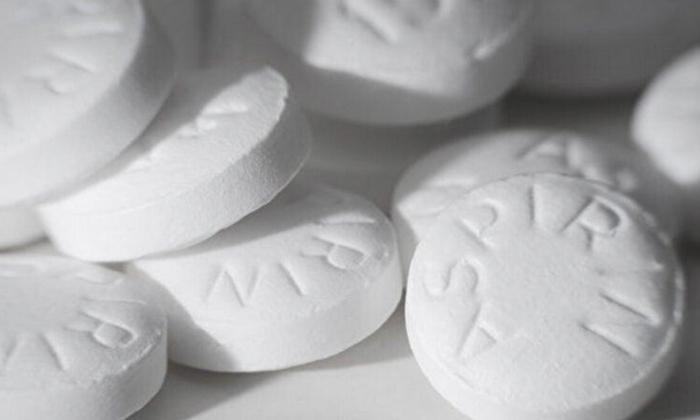
This is unexpected and points also to a larger picture as well. we already know that by the whole issue around circulatory disease is likely low level scurvy and we also add vitimin D and those aspirins. We likely need to throw in vitimin E as well.
I realized that iam sympthomatic for low vitimin E from reading all this and that should be a hint to do have a full workup done by a naturapath.
Liver Disease Patients Could See Promising Results With Baby Aspirin
A new clinical trial found that baby aspirin could reduce the amount of liver fat in patients with metabolic dysfunction-associated steatotic liver disease.
By Amie Dahnke
3/21/2024Updated:
3/26/2024
https://www.theepochtimes.com/health/liver-disease-patients-could-see-promising-results-with-baby-aspirin-5610885?
Patients suffering from metabolic-associated liver disease could benefit from low-dose aspirin.
A new clinical trial out of Boston found that baby aspirin could reduce the amount of liver fat in patients with metabolic dysfunction-associated steatotic liver disease (MASLD). The results were recently published in the Journal of the American Medical Association.
In the small study, 80 participants between 18 and 70 were given either 81-milligram aspirin or a placebo pill. They took one pill daily for six continuous months. At the end of the trial, the participants given the low-dose aspirin experienced a 6.6 percent reduction in relative liver fat versus 3.6 percent with a placebo.
What Is MASLD?MASLD, which used to be known as nonalcoholic fatty liver disease, is the most common chronic liver disease around the globe, affecting more than 30 percent of the world’s population. Steatotic liver disease happens when the body begins to store fat in the liver. Some fat in the liver is normal, but the organ may become damaged when more than 10 percent of its weight is fat. Often, excessive alcohol use is a common cause of steatotic liver disease, but MASLD occurs without overusing alcohol.
MASLD is thought to be caused by a group of related metabolic disorders involving high body mass index, high blood lipid levels, high blood pressure, and diabetes. These health markers influence one another and often change how the body metabolizes nutrients and stores fats.
An individual’s diet and nutrition likely influence liver disease that develops without excessive alcohol use. According to the Cleveland Clinic, diets high in fructose may increase a person’s chance of developing MASLD. The reason? High fructose consumption is linked to metabolic syndrome, a cluster of conditions that raises a person’s risk of developing heart disease, Type 2 diabetes, stroke, and more.
Genetics may also have a role in why a person develops MASLD.
While the condition is common, MASLD doesn’t usually present with symptoms. Symptoms typically don’t begin to arise until MASLD progresses to metabolic dysfunction-associated steatohepatitis (MASH). With MASH, patients often experience inflammation in the upper right abdomen, swelling, and pain in the liver’s location.
Steatohepatitis is the main complication of MASLD. One in five people with MASLD develop MASH, in which the liver is chronically inflamed. When the liver is in a state of constant inflammation, it puts a person at risk of developing cirrhosis, or scarring of the liver.
Additionally, women with MASLD who are trying to get pregnant may experience complications. MASLD in pregnancy is associated with an increased risk of complications for both the mother and the fetus. For example, pregnant women with MASLD are between three and four times more likely to experience hypertensive complications, such as preeclampsia.
Baby Aspirin Potentially a Simple SolutionThere is no treatment to reverse fatty liver disease, though the U.S. Food and Drug Administration just approved the first-ever drug to treat MASLD alongside lifestyle changes on March 14. Typically, physicians prescribe a change in diet and activity levels to combat the condition. According to the Cleveland Clinic, patients can often slow or reverse the accumulation of fat in the liver by managing other metabolic factors, including weight, cholesterol, blood sugar, and blood pressure. People must lose at least 3 percent to 5 percent of their body weight before seeing results in the liver.
Unfortunately, once MASH becomes cirrhosis of the liver and scarring occurs, the damage becomes permanent. Certain medications are available to control the progression of certain types of cirrhosis.
Taking a low dose of aspirin could be key to reducing fat in the liver and, thus, discouraging the progression of liver disease, according to the new research. Aspirin is inexpensive, and study participants experienced few adverse events.
“Compared with placebo, aspirin treatment significantly reduced relative hepatic fat content,” the researchers wrote.
The research team did note that a larger clinical trial is warranted for additional information on the medication’s efficacy, as this was only a preliminary trial
No comments:
Post a Comment